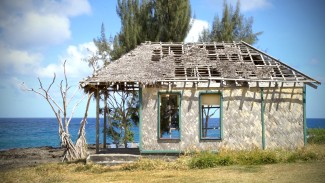Solutions, pitfalls and priorities to stimulate ecotourism, preserve wildlife and develop, sustainably
Nature is declining globally at rates unprecedented in human history, states a recent UN report.
A key message of the Global Assessment Report on Biodiversity and Ecosystem Services by the Intergovernmental Science-Policy Platform on Biodiversity and Ecosystem Services (IPBES) is that nature and its contributions to people are deteriorating worldwide. Since 1970, 14 of the 18 assessed categories of nature’s contributions have declined. Most ominously, “An average of around 25% of species in assessed animal and plant groups are threatened… suggesting that around 1 million species already face extinction, many within decades, unless action is taken to reduce the intensity of drivers of biodiversity loss.”
What are we to do?
In Africa, the continent’s extraordinarily rich biodiversity is an asset for sustainable development. Although measures by African governments to protect biodiversity and nature’s contributions to people have contributed to some recovery of threatened species, especially in key biodiversity areas, the IPBES regional assessment report for Africa states that accelerated expansion of protected spaces in areas of rich biodiversity and endemism is urgently needed. Most importantly, “Africa’s current population of 1.25 billion is likely to double by 2050, putting severe pressure on the continent’s biodiversity and nature’s contributions to people, unless appropriate policies and strategies are adopted and effectively implemented.”
Africa hosts eight of 36 global biodiversity “hotspots”, described by the IPBES Africa assessment as “Earth’s most biologically rich and threatened areas, with large numbers of endemic or threatened species.” For Madagascar and the Indian Ocean Islands hotspot, for example, the article “Last chance for Madagascar’s biodiversity” warns of the imminent species extinction risk. Addressing the precipitous decline of biodiversity in Madagascar will help deliver on the new government’s commitment to improving the economy and raising people out of poverty, the authors state, by protecting ecosystem benefits and creating new employment in local communities.
With tourism already a vital source of revenue for Madagascar, the article notes that Rwanda and other countries are benefitting greatly from tourism that is linked to biodiversity. Expanded investments in Madagascar’s protected areas are one of the five urgent actions recommended.
LEMURS AND MORE
The 2013 report Lemurs of Madagascar: A Strategy for Their Conservation 2013–2016 by the International Union for Conservation of Nature (IUCN) emphasizes ecotourism as a solution to protecting Madagascar’s biodiversity. It states that in the opinion of many, Madagascar is “the world’s single highest priority biodiversity hotspot.” Unfortunately, Madagascar is also among the most heavily impacted countries in terms of habitat loss, with only 10% of Madagascar’s land area remaining suitable primate habitat.
Achieving conservation results requires several key elements. The first, the IUCN states, is working closely with local communities, and the second is development of lemur ecotourism. "Lemurs are already Madagascar’s number one tourist attraction, and the number of sites to visit can be increased tenfold over the next five years, and probably a hundredfold over the next decade if adequate funding is available.”
Lemur ecotourism could result in sustainable revenue and livelihood development for local communities, via employment in ecolodges or as guides or agricultural suppliers, and this could be a major source of foreign exchange for the country as a whole. The 2013 strategy included 30 site plans, several with specific ecotourism objectives. Subsequently, SOS Lemur and the Lemur Conservation Network were launched to help coordinate project funding and implementation.
Of course, tourism also has negative aspects. The IPBES report states, “Between 2009 and 2013, the carbon footprint from tourism rose 40% to 4.5 gigatons of carbon dioxide and overall 8% of the total greenhouse-gas emissions are from transport and food consumption that are related to tourism… The demand for nature-based tourism, or ecotourism, also has risen, with mixed effects on nature and local communities, including some potential for contributions to local conservation in particular when carried out at smaller scales.”
ENSURING PROTECTIONS
In terms of action, the IPBES report advocates for “Mainstreaming biodiversity within and across different sectors (e.g. agriculture, forestry, fisheries, mining, tourism,” i.e. ensuring that policies and practices in these areas protect biodiversity. In the African regional assessment report, one table outlines Africa’s Agenda 2063 strategic priority areas that relate to biodiversity and nature’s contributions to people. Among them is the development and maximisation of ecotourism.
In 2019, Snyman & Spenceley highlighted a diversity of private sector models for ecotourism in protected areas through the use of 32 case studies from 11 African countries. These models engage a diversity of stakeholders, and the book highlights lessons learned and best practices to maximise the social and economic benefits from ecotourism, while at the same time conserving biodiversity. An example of regional ecotourism policy is ECOTOUR 2019-2029, adopted by the ECOWAS Heads of States in June 2019.
Important ecological areas could be lost as the continent struggles with a growing population, poverty and the illegal wildlife trade. However, successful examples of mainstreaming biodiversity in the tourism sector in Africa do exist, including Akagera in Rwanda and Gorongosa in Mozambique. Key elements are long-term stakeholder commitments, good management and adequate financing.
To date, the World Bank notes, the nature-based tourism (NBT) sector has largely been overlooked for public-private partnership (PPP) investments, despite being the largest market-based contributor to financing national parks and other protected areas.
The new report Building a Wildlife Economy by the conservation organization Space for Giants Club and the UN Environment Programme notes that back in 2015 fees from protected areas in just 14 countries in sub-Saharan Africa were estimated at US$142 million per year. Overall, the report states, “Tourism drives 8.5% of Africa’s economy, and supports 24 million jobs.”
Annual consumer spending on tourism, hospitality and recreation in Africa is expected to grow from US$124 billion in 2015 to $262 billion by 2030, with international tourist arrivals predicted to reach 134 million.
Wildlife watching is an important part of tourism for most African countries, representing 80% of the total annual trip sales to Africa for the tour operators who participated in a 2015 UNWTO study, with that share only increasing since. Despite these benefits, the Space for Giants report states, “There is an urgent need to identify sustainable funds to maintain the natural landscapes that are not only driving Africa’s economy but are also supporting the ecosystem services on which all life on Earth depends.”
To date, the World Bank notes, the nature-based tourism (NBT) sector has largely been overlooked for public-private partnership (PPP) investments, despite being the largest market-based contributor to financing national parks and other protected areas. Nonetheless, “there are examples in Africa of countries investing in their NBT sector over the last two decades, including Botswana, Namibia, South Africa, Uganda, Tanzania, and others. NBT is now a significant source of foreign exchange, taxes, and jobs in these countries.”
Africa's Untapped Potential for Natural Tourism (WEF) from Enhanced Integrated Framework
CONCLUSIONS AND CREATIVE SOLUTIONS
Current negative trends in biodiversity and ecosystems are undermining progress towards the Sustainable Development Goals, including those related to poverty, hunger, health, water, cities, climate, oceans and land. The IUCN Lemur Strategy, for example, while successful in raising significant project funding, does not yet appear to have succeeded in greatly expanding lemur ecotourism, preventing extinction or creating adequate income for local communities.
Successful ecotourism development requires very strong stakeholder coordination. As the Building a Wildlife Economy report states, “what lies at the heart of Rwanda’s startling success is a clear plan, strong government support, and the engagement of the private sector.”
Sustainable management of ecotourism expansion is critical to avoid overtourism, which would detract from the ecotourism product in the long-run, and to ensure that ecotourism is maximised for the benefit of local communities. Most important of all, however, as noted in a blog for the Lemur Conservation Network, “You can protect the forests, but if you cannot empower the people with sustainable opportunities… you’ve missed the mark.”
--------
EIF recognizes tourism as one of the key growth sectors for least developed countries (LDCs), creating a high percentage of jobs for women and youth, as well as links with other sectors, including agriculture and transportation. In Sierra Leone, EIF is supporting a project to develop and improve three ecotourism sites at Banana Island, Tiwai Island Wildlife Sanctuary and the Wara-Wara Hills. In Comoros, EIF is addressing ecotourism and supporting local communities by funding three ecolodges in three areas. In Liberia, EIF is funding a project to promote tourism to international, regional and domestic markets, and to develop new tourism destinations around surfing and other water-related activities.
During project formulation and implementation, EIF helps beneficiary countries to consider potential environmental impacts of their tourism efforts, including mitigation measures to be undertaken to make tourism more sustainable.
-----
Dale Honeck is Senior Counsellor, Trade in Services and Investment Division, World Trade Organization. Susan Snyman is Senior Programme Officer, Conservation Areas and Species programme, BIOPAMA Coordinator International Union for Conservation of Nature ESARO. Paulin Zambelongo is Coordinator, Executive Secretariat for the Enhanced Integrated Framework at the WTO.
If you would like to reuse any material published here, please let us know by sending an email to EIF Communications: eifcommunications@wto.org.



